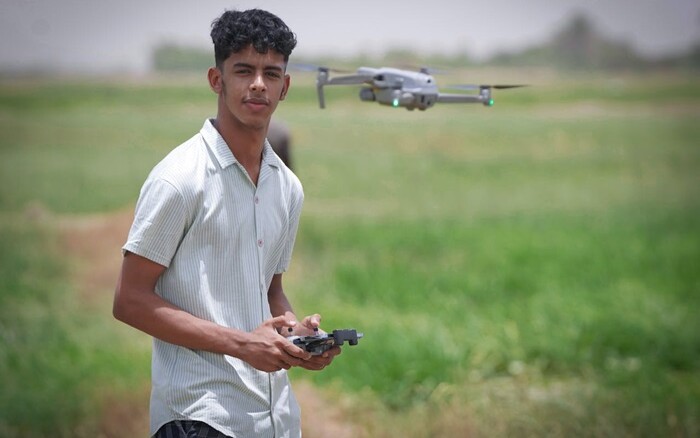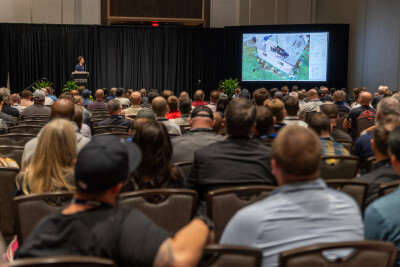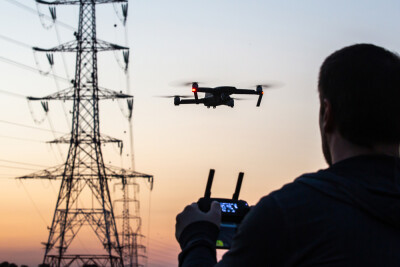For the past six years, we have helped civil aviation authorities in Latin America fine-tune and in some cases enact uncrewed aviation regulations which are designed to encourage the use of this new method of transporting goods and eventually people.
Some of these regulations have been resounding successes such as the RAC100 in Colombia, that thanks to its clarity and tightly defined rules-of-engagement has brought new life into an industry that was in the brink of collapse.
On the other hand, other Latin American countries are struggling to find the right mixture of regulation and permissibility that would allow uncrewed aviation to reach its potential within their respective borders.
Recently, as an independent, international consultant firm, we have been helping one of these countries with its drone legislation and have found a disconcerting and worrisome trend. The lack of differentiation between the responsibility of the PIC and the operator or the entity that benefits financially from the operation of the drone.
In the US, under FAA Part 107 regulations, the PIC and the operator have distinct responsibilities:
Pilot in Command Responsibilities:
- Direct Responsibility: The PIC is directly responsible for the operation of the small, unmanned aircraft system (sUAS).
- Final Authority: The PIC has the final authority over the operation and is responsible for ensuring the flight is conducted safely.
- Compliance: The PIC must ensure compliance with all applicable regulations and operational limitations.
- Safety: The PIC must avoid careless or reckless operations and ensure the safety of the flight.
Operator Responsibilities:
- Registration: The operator is responsible for registering the drone with the FAA.
- Certification: The operator must ensure that the PIC holds a valid remote pilot certificate.
- Compliance: The operator must ensure that the operation complies with all Part 107 regulations, including maintaining visual line of sight, avoiding crewed aircraft, and not flying over people unless they are directly participating in the operation.
- Waivers: If the operation requires a waiver (e.g., flying at night, beyond visual line of sight), the operator is responsible for obtaining the necessary waivers.
In summary, the PIC is primarily responsible for the actual flight and safety, while the operator handles administrative and regulatory compliance aspects.
As usual, we would like to use history and precedence, including lessons learned in traditional crewed aviation as our guiding principle in order to create a framework for remotely piloted aircraft (RPAs).
In FAA Part 121, which governs the operations of air carriers such as American Airlines, Delta, Southwest, etc., the PIC and the operator have distinct responsibilities as well:
Pilot in Command Responsibilities:
- Operational Control: The PIC is responsible for the safe operation of the aircraft during flight. This includes making decisions regarding the flight, ensuring compliance with regulations, and handling any in-flight emergencies.
- Final Authority: The PIC has the final authority over the operation of the aircraft and is responsible for the safety of the flight.
- Preflight Planning: The PIC, along with the aircraft dispatcher, is responsible for preflight planning, including weather checks, route planning, and ensuring the aircraft is airworthy.
Operator Responsibilities:
- Operational Control: The operator (air carrier) is responsible for overall operational control, which includes ensuring that all operations comply with Part 121 regulations.
- Certification and Training: The operator is responsible for ensuring that all personnel, including the PIC, are properly trained and certified according to Part 121 requirements.
- Maintenance and Safety Programs: The operator must maintain the aircraft in accordance with FAA regulations and implement safety programs to ensure safe operations.
- Dispatch Release: The operator, through the aircraft dispatcher, is responsible for the dispatch release, ensuring that the flight can be conducted safely in compliance with regulations and operational specifications.
In summary, while the PIC is responsible for the actual operation and safety of the flight, the operator is responsible for the broader operational control, compliance with regulations, and ensuring that all safety and training programs are in place.
Given the 120 years of traditional crewed aviation, we know for sure how responsibility has been assigned in the thousands of accidents and incidents that have helped the FAA to fine-tune an extremely safe mode of transportation.
The FAA can take enforcement actions against a pilot for negligence. If a pilot is found to have operated an aircraft in a careless or reckless manner, they can face civil penalties (fines) and certificate actions (such as suspensions or revocations of their pilot certificate).
Civil Penalties:
- The FAA can impose fines ranging from $1,100 to $27,500 per violation, depending on the severity and nature of the violation.
Certificate Actions:
- The FAA can suspend or revoke a pilot's certificate if they are found to have violated regulations, such as operating an aircraft carelessly or recklessly.
Examples of Negligence:
- Operating an aircraft without proper preflight checks.
- Flying in adverse weather conditions without proper training or equipment.
- Violating airspace regulations or failing to maintain proper communication with air traffic control.
The FAA's enforcement actions are designed to ensure safety and compliance with aviation regulations. If a pilot is found negligent, they can face serious consequences, including fines and the loss of their ability to fly.
In the case of the operator, the FAA can take enforcement actions against an operator for negligence as well. Similar to pilots, operators (air carriers) can face civil penalties (fines) and certificate actions (such as suspensions or revocations of their operating certificates) if they are found to have operated in a careless or reckless manner.
Civil Penalties:
- The FAA can impose fines ranging from $1,100 to $27,500 per violation, depending on the severity and nature of the violation.
Certificate Actions:
- The FAA can suspend or revoke an operator's certificate if they are found to have violated regulations, such as failing to maintain proper safety standards or not adhering to operational requirements.
Examples of Negligence:
- Failing to maintain the aircraft in accordance with FAA regulations.
- Not implementing required safety programs.
- Operating flights without proper certification or training of personnel.
The FAA's enforcement actions are designed to ensure safety and compliance with aviation regulations. If an operator is found negligent, they can face serious consequences, including fines and the loss of their ability to operate.
Using these similarities as examples of enforcement of responsibilities for crewed and uncrewed aviation, we can deduce that future aviation regulations around the world will follow similar paths for both and that one day these similarities will contribute to a full integration of piloted and remotely piloted aircraft in the National Airspace.















Comments